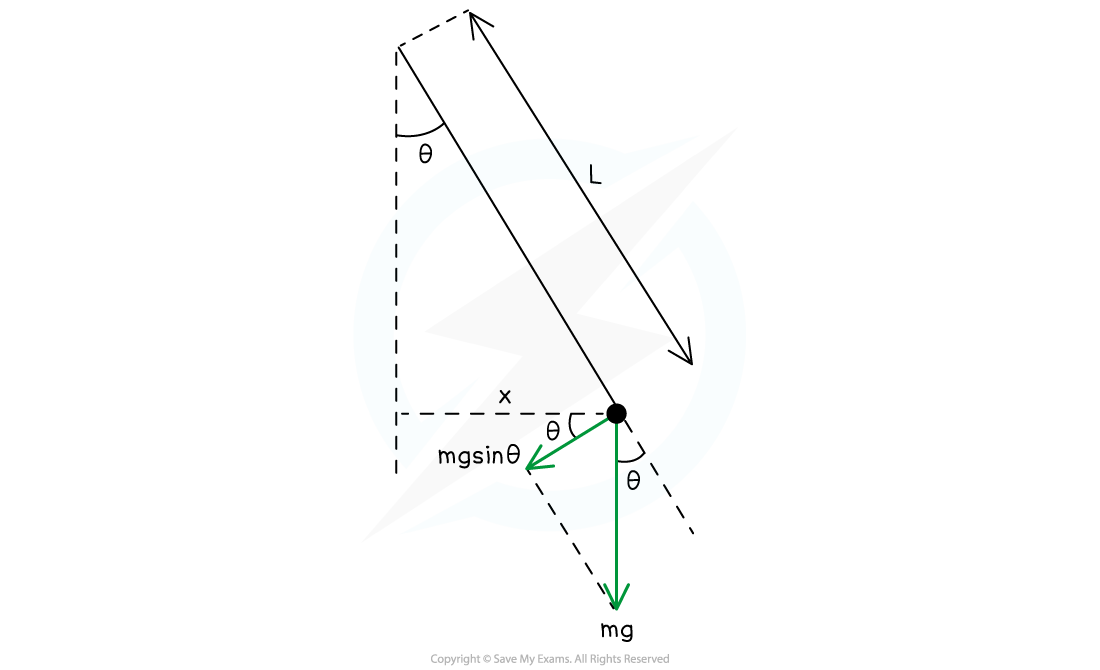Period of Simple Pendulum
- A simple pendulum consists of a string and a bob (a weight, generally spherical considered a point mass) at the end
- The bob moves side to side
- Attached to a fixed point above
- The time period of a simple pendulum for small angles of oscillation is given by:

- Where:
- T = time period (s)
- L = length of string (from the pivot to the centre of mass of the bob) (m)
- g = gravitational field strength (N kg-1)

A simple pendulum
- The time period of a pendulum does depend on the gravitational field strength, meaning its period would be different on the Earth and the Moon
Small Angle Approximation
- This formula is limited to small angles (θ < 10°) and therefore small amplitudes of oscillation from the equilibrium point
- The restoring force of the pendulum is the weight component acting along the arc of the circle towards the equilibrium position
- It is resolved to act at an angle θ to the horizontal x
- When considering SHM because of small angle approximation it is assumed the restoring force acts along the horizontal
- So sin θ ≅ θ

Forces on a pendulum when it is displaced. Assuming θ < 10°, the small angle approximation can be used to describe the time period of a simple pendulum such as this.
Worked example
Calculate the time period of a simple pendulum on the Moon, if on Earth it has a time period of 7 s. g on the moon is 1/6 of that on Earth.


